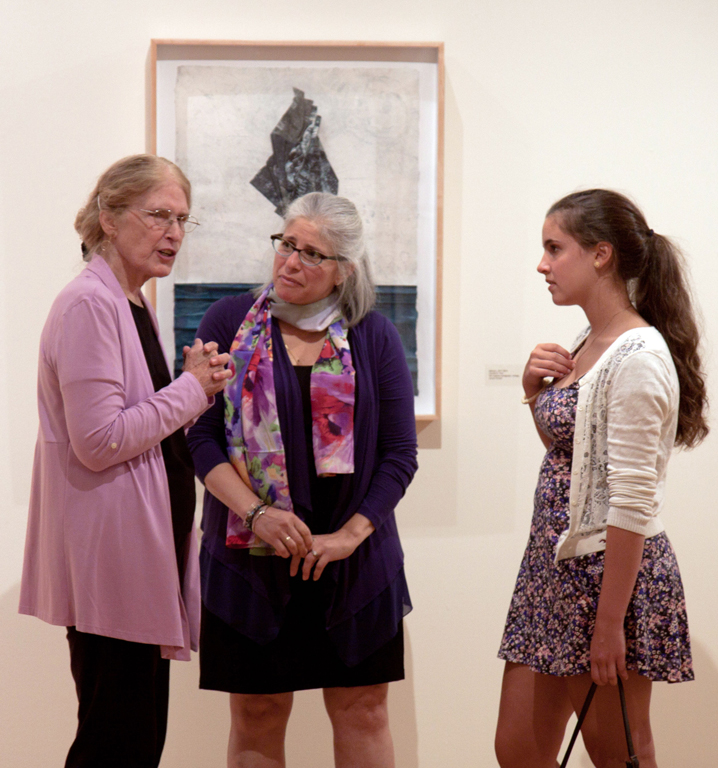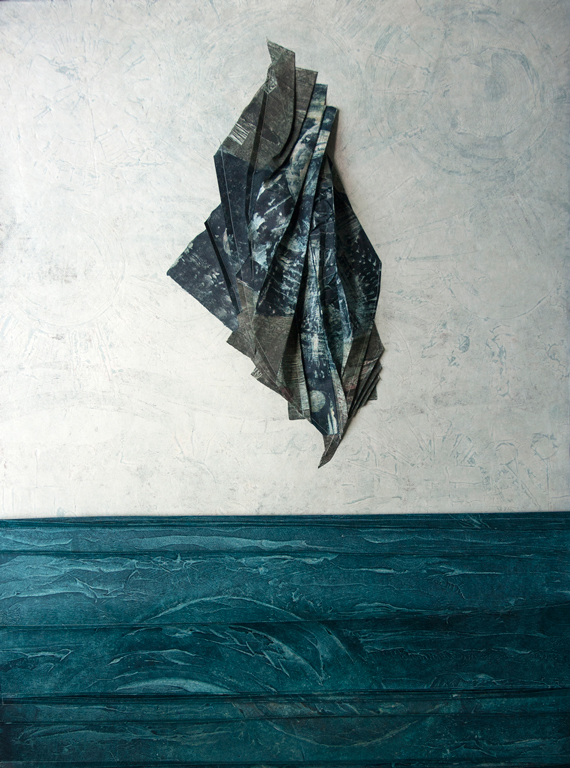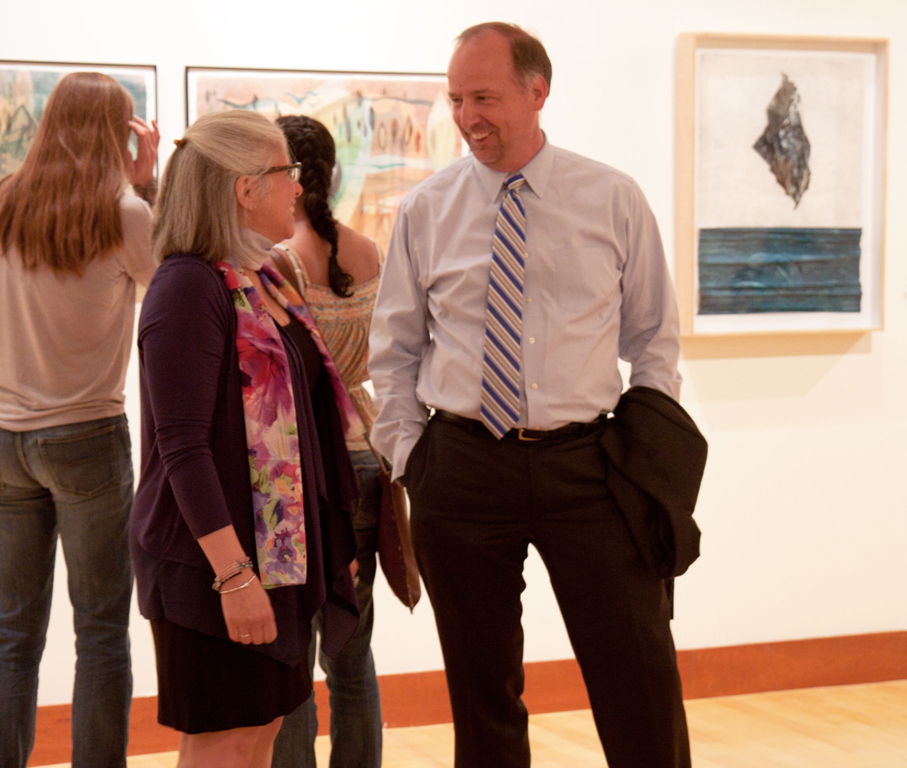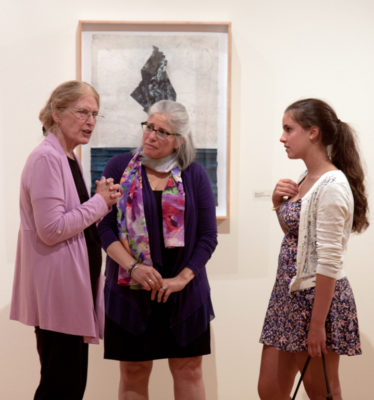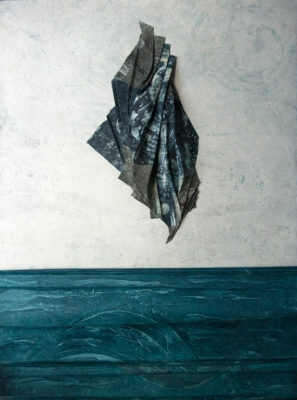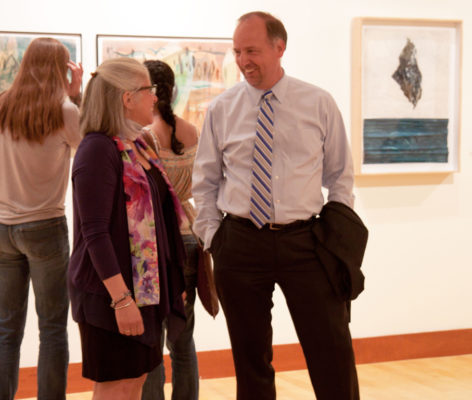Claudia Fieo
Claudia Fieo has taught printmaking and graphic design at Wheaton College since 1992. Alternating between representational and abstract imagery, Fieo’s prints deal with nature and natural forms, giving expression to the ineffable mysteries of human experience. She is one of five art professors whose artwork is featured in the exhibition “P3SF” in the Beard and Weil Galleries through Oct. 31, 2014. Here, she reflects on the intersection of her work as an artist and professor.
I teach in two distinct artistic disciplines—graphic design and printmaking—and though my artistic work is in printmaking, I think one can see the influences from having studied graphic design in some of my print works. Because there are many, many techniques and materials for printmakers to exploit, I have become very comfortable being experimental, since I am always learning new techniques to introduce to my students. These processes will often find their way in my own artistic work because of that experimentation, that time spent learning a process well enough to teach it to students. This also has helped me better relate to students who are learning something for the first time because I, too, have been in that challenging position and therefore understand how demanding some of these processes are to learn, let alone master.
It is out of a genuine love for my students that I push them in a supportive way to reach their potential. I work with students on a one-to-one basis and so teaching is an exhausting process, getting to know my students well enough to try to help each of them develop their unique individual voice while also learning the challenging technical processes. Preliminary work becomes very important—for both my graphic design students and printmaking students. Sketchbook work and preliminary studies are not only an invaluable part of the creative process, but it also provides a shortcut to gaining insight into one’s thought process. It streamlines the dialogue between teacher and student.
I always tell my students that speculation is not enough—we need to see it in order to assess if it might work or not. I also try to help my students realize that preoccupation with outcome can only stifle the courage required for growth. Intrinsically, my approach to teaching creativity denies students the safety and comfort of easily defined, concrete solutions, but offers them a structure within which to cultivate their voice through the art-making, problem-solving process. I try to adopt this attitude for myself every time I work in the studio on my own work.
Sometimes the things that I learn in my own practice are practical tricks that I can pass along to my students. Just recently I was able to offer advice using a particular type of ink to a student who is doing an independent study in printmaking with me this semester. I simply passed along information that I had gained in my experience manipulating materials in my own work this past summer. Other times, what I learn in my own studio practice is less tangible but hopefully no less valuable.
Sometimes students deal with self-doubt or fear of failure. Self-doubt is a close friend of mine. Since I experience it myself on a regular basis, when I sense that a student is struggling with this, I pass along concrete tricks I have learned along the way to free myself of the critic sitting on my shoulder—so that I can get past the fear and allow myself to respond to the work and how it is developing.
When I am able to let go of the fear, usually things start to move in an encouraging direction, which then fuels my creative energies. I try to help my students access that courage as well in their own practice. So I do believe that my own experiences as an artist help me be a better teacher and mentor to my students.
Gallery photos by Jessica Kuszaj

